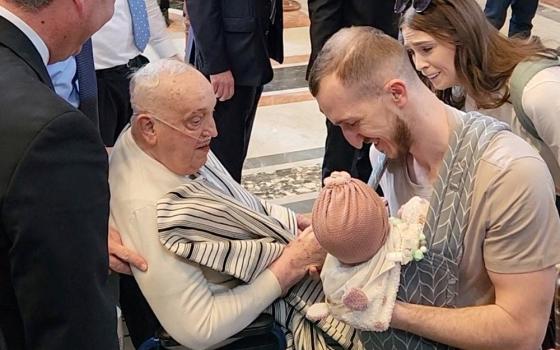Last year, the fiscal year that ended Sept. 30, we, the United States, spent one trillion, one hundred billion dollars on the military.
Actually it was more, $1,100,446,000,000. The $446 million was just too long to spell out.
My source is American Friends Service Committee (AFSC). Their analysis of the US budget can be found on the website oneminuteforpeace.org.
AFSC had developed an amazing graphic, a yardlong strip of paper dividing up the president's 2012 discretionary budget, the parts that must be voted on each year. Sixty percent of the budget is allocated to the military. Last year it was 58 percent.
Sixty percent. The strip of paper has six folds. You keep opening it and all you see is red for the first three and a half folds. Everything else is squished onto the end of the strip -- health and human services; education; aid to states; housing and urban development; justice; agriculture; NASA; energy; labor; treasury; interior; and more.
Roberta, the sister I live with, looked at the strip and said, "Interior. Is that where the parks are? One percent!"
It is very hard to grasp how much a trillion dollars is. It is about $2.1 million spent every minute on war and weapons. Hence the website oneminuteforpeace.
I have trouble grasping what a million dollars is. The Osprey, the fixed-wing plane that can land and take off vertically like a helicopter, has a sticker price of $70 million, but really costs $123 million if you factor in research and development, training and spare parts.
The St. Louis City Public School System budget totals $283.5 million. That's a little more than 2 Ospreys. Less if you figure in gasoline.
The heavy-hitters have come forward to defend the Pentagon. We have 300 Osprey, but we need 158 more; we must have the F-35 joint-strike fighter; we also need 50 more ships, new satellite intelligence, etc. Well, if we have the weapons, what do we give up? That is the question.
Another way is to ask ourselves what the purpose is of all these weapons. We have 300 of those Ospreys at the cost of $36 billion. What do we think they will accomplish?




